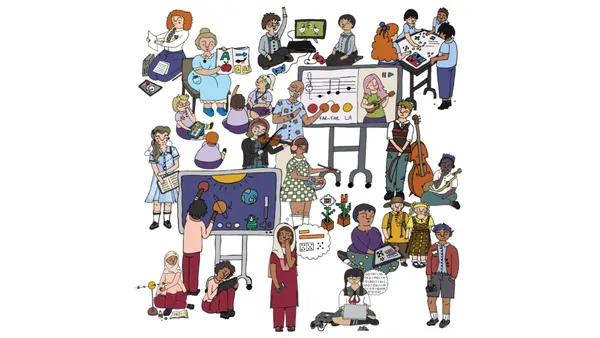Dive Brief:
- California school districts face mounting challenges in addressing the physical and mental health services for students that often affect school attendance and their ability to function in a classroom. Many districts in the state face serious budget issues, and California ranks 39th in the nation for its school nurse-to-student ratio and last in the nation for its counselor-to-student ratio, EdSource reports.
- As schools search for solutions, learning how to work with county governments and other institutions is critical in order to maximize available resources, minimize bureaucratic challenges, and increase the ability to gain and utilize grant money effectively.
- School leaders also need to understand the barriers that families face in providing adequate physical and mental health care services for their children. Challenges such transportation, the stigma of mental health care and the difficulty in getting time off work for appointments can be solved, in part, by school-based services and providing health education for families.
Dive Insight:
Though student physical and mental health does not, at first glance, appear to be a strictly educational issue, it is important because children cannot be taught if they are not present, in reasonable health and in the right frame of mind to learn. Moreover, school leaders are responsible for the health and well-being of students during the time they are entrusted to the school district’s care, making this a responsibility that cannot be treated lightly.
In the past, school nurses assumed the mantle of healthcare provider at schools. But funding cuts over the past decade or so have caused many districts to slash the number of school nurses. In California, in 2010, each nurse treated an average of 2,187 students, according to the National Association of School Nurses. By 2015, each nurse was responsible for a statewide average of 2,784 students.
And this issue isn't limited to California.
Though the National Association of School Nurses recommends a nurse-to-student ratio of 1 to 750, state averages range from one nurse serving 250 students in Vermont, to one nurse serving more than 4,800 students in Utah. The state of Hawaii has no school registered nurses in schools, according to data from that organization. Though the American Academy of Pediatrics recommends that a school nurse be present on every campus, most states don’t require school nurses or issue guidelines regarding the number of students they serve.
More schools are now turning to the idea of school-based health and mental health clinics, especially in medical deserts. According to the Health Resources and Services Administration (HRSA), there are roughly 2,000 school-based health centers nationwide and about 20% of those are funded, at least in part, through the HRSA Health Center Program. Schools are the natural place to operate these clinics because most children in the community are connected to public schools. Providing services on campus also means that children miss less school and parents encounter fewer obstacles to meeting physical and mental healthcare needs.
When schools work together with county health departments and other local healthcare providers, they often find that they only need to provide a place for the work to happen. Grants and community funds often can help with the needed facility upgrades, and medical costs are usually covered by the student’s insurance or government healthcare programs.






 Dive Awards
Dive Awards




